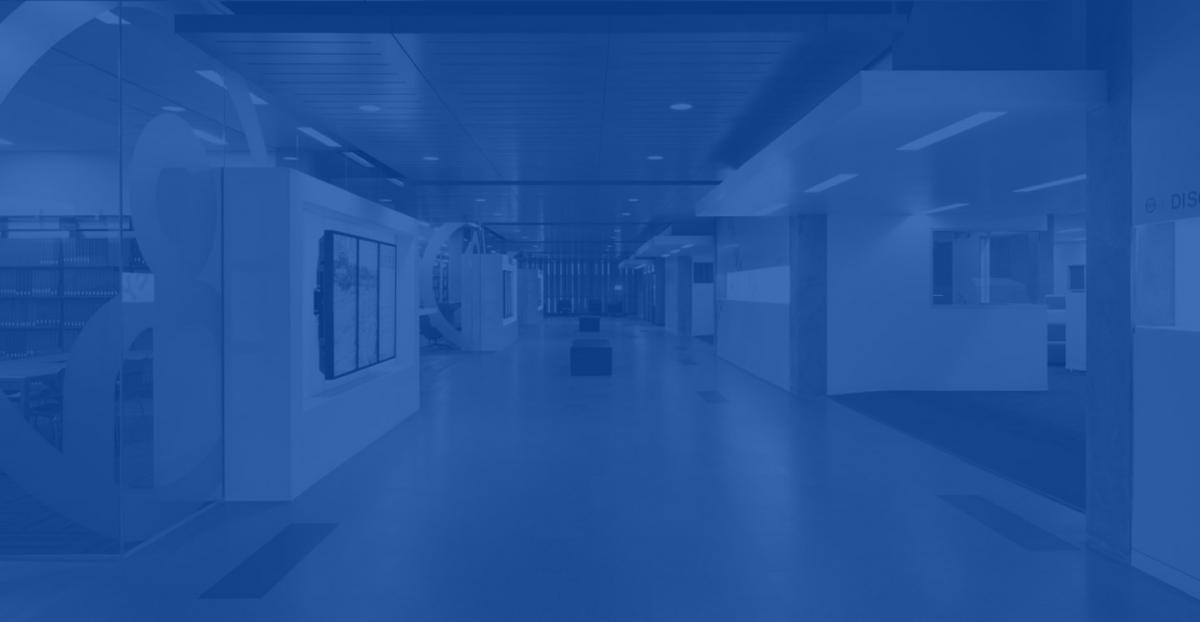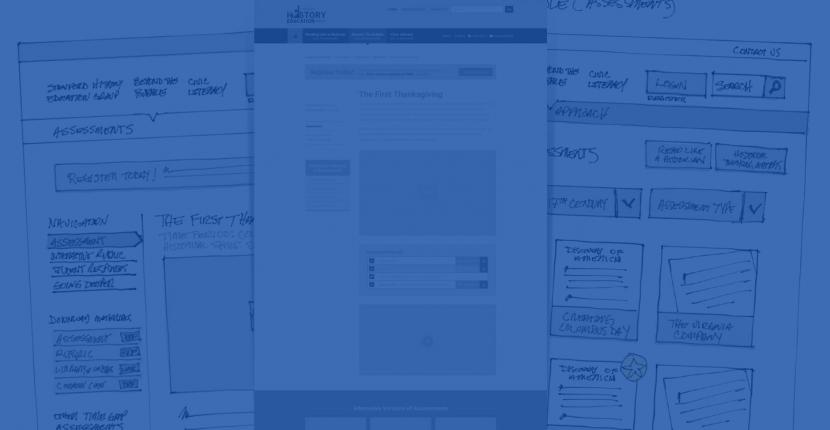Designing a website for an organization with multiple locations is challenging. Especially when those locations have their own needs, goals, and identities. Libraries, in all shapes and sizes, face many challenges when building or redesigning their website. They need to build something that students and patrons can use for research as well as something that actually helps people interact with the library’s various locations. This becomes especially difficult when the library is spread across several buildings and departments — and the people that work at the different libraries often have very different ideas about how their library should be represented on the Web.
Building a great library website is an ambitious project with the ultimate goal of serving the students, faculty, staff, and community.
On the surface, building a library website might feel like just another web project, but when you dig into it, you see there are many, many unique challenges stemming from the unique relationship the library has with it’s virtual and physical spaces. In this article, I explore 10 of those challenges and some possible solutions. Like any web project, though, every situation is unique. I prefer to focus on guidelines and considerations rather than describe actual solutions.
Challenge #1 - Who is our primary audience and what is their context of use?
What’s interesting about Universities—and Libraries fall victim to this, too—there are plenty of audiences to go around and each of their needs must be met for the website to be considered a success. Unfortunately, having too many audiences is like having too many cooks—you end up with something bland that no one likes.
Once you know who your primary audience is, you can explore their Contexts of Use. Contexts of Use are the place, time, and situation in which they will be using the website.
-
When will they need help finding a location?
-
What in the space are they looking for? (A building? Equipment? Something else?)
-
Where are they when they need to find that location?
Sidenote: When we talk about audiences, we also often talk about their goals. Multiple audiences might have similar goals. (How many audiences for a University Library have “Conduct independent research” as a primary goal?) Contexts of Use, though, differentiate these goals across the audiences. A student who needs to conduct independent research at the library website will approach it differently than a faculty member.
So why are contexts of use important? Well, they reveal things like why people are searching for a location (meeting a group, or maybe they need a copy machine, or maybe they want a quiet place to study) and allow you to design experiences for those contexts.
Challenge #2 - Are we a library? Or do we have libraries?
University Libraries are spread all over campus. There’s almost always “The Library” — the one building that everyone thinks about when you tell them to meet you at “The Library” but that is probably just one location of many.
Not to mention the many affiliated libraries—the independent collections managed by departments—the literature collection tucked away in the basement of the Humanities building. How are these related to the library and does your audience understand that relationship? Often this is a question much bigger than a website design project—venturing into your overall strategy, but the answer (and its trickle down effects) can hinder or help your audience accomplish its goals.
And all that leads to the question: Are you a University Library—or are you the University Libraries? It’s an identity question that affects your brand, the representation of that brand online, and the freedom you give the individual libraries.
Challenge #3 - Libraries are not Buildings
Repeat after me: Libraries are not buildings. For some of your libraries, this is painfully obvious. A special collection might be tucked into the corner of a building—be considered its own department, have its own hours and staff. That library is located within a building.
For other libraries, though, it’s less obvious. For example, at the UCLA Library, the Powell Library is located in the Powell Library building, but so are several special collections. You see the confusion? In the physical world, libraries have a special connection to the information they hold—that is the only place you can access that information. It goes without saying that, in the virtual world, these boundaries no longer exist. But because our understanding of physicality (that, and the trend of naming a building after its current use) lead to a tendency to conflate the actual library with the building that houses it.
Where it becomes painfully obvious is when a library is spread across multiple buildings—something that can often happen in space-starved Universities. (And let’s be honest, no matter how large the University, there is always a need for more space.)
There are several key instances when confusing the building with the library will actually create project over-runs. Buildings need to be managed separately from the libraries. The buildings, like the libraries themselves, may have unique names and will definitely have physical locations.
Even more challenging, though, is that this misunderstanding can also lead to poor decision-making about how to structure content. Just like the books and journals of a library live within the physical walls of building, some library staff might think their content should live within the virtual walls of their particularly library’s sitelet. This is where having well-defined persona with prioritized goals and contexts of use become critical to the success of the project. You can use these to explore whether people are first finding a specific library before beginning their search OR are they expecting to search for relevant research from a centralized research section OR something else entirely. (And, of course, stir in a healthy dose of usability testing to verify your hypothesis.)
Challenge #4 - Finding the right location
Here’s a fun one.
How do you know people are getting the right location?
It’s easy when you have a library called The Humanities Library and people are searching for the Humanities Library. But what happens when you have The John Doe Library of the Humanities and people refer to it as the Hum. Or some people call it the Hum and others call it the Humanities Library. It can get confusing real quick if you don’t have an option to add nicknames to your libraries (add nicknames to your buildings while you’re at it, too).
Challenge #5- When the library doesn’t matter, but the location does...
Finding a location is pretty easy when people are searching for a specific location—whether that be a library or a building. But there are plenty of contexts in which a user needs something that is location-agnostic.
Maybe they need a copier or a printer or a computer. Most libraries will have copiers spread all over campus—and some with different pricing. Keeping track of all the amenities that each location offers can be no easy task, but can go a long way to helping your audience actually get what they need from the library.
Tip: Think beyond equipment and things like wifi. Do some libraries offer study rooms? Or some places might offer a group study area where you don’t need to keep your voice down. These are all important amenities that people will be looking for. Taking note of the questions your students are asking about your locations will give you insight into the types of amenities you should be offering and how you should be categorizing your various locations.
Challenge # 6 - Is it open?
One of the biggest challenges seems like it would be the simplest. Students (and all of your audiences, really) need to know one of two things: 1) Is it open now? 2) Will it be open when I need it?
Of course, answering these questions is tricky. You’ve got your normal hours, your holiday hours, your end-of-the-semester hours, your summer hours—so many special circumstances, how do manage them all, much less present them to the user in an easy to read format? There’s really no simple answer other than to keep it as simple as possible and to conduct usability testing on sketches and prototypes with real users.
One of the useful, yet tricky, things we did with UCLA was to add “Open Now” as a search facet, so that all results returned only buildings that were open now—particularly useful for the students that needed a late night copy machine (context of use!) as well as including an “Open Now” indicator right in the location pages’ navigation bar.
Challenge #7 - Destinations within a location
“Is it open?” is not always an easy question to answer. Often, you will have destinations within a location that have separate hours than the main location. While the library will be open, the computer room might not be.
The solution we implemented for UCLA Library was to allow each location to have Destinations with their own descriptions, contact information, and hours. A future iteration of this should also include walking directions from various entrances—assuming that those entrances are clearly designated.
Challenge #8 - What’s going on at the Library?
Libraries host some great events that need to be listed on the website. There are, though, two challenges you face with events.
The first part of this challenge comes from conflating the building and the library as illustrated by this story:
Once upon a time, there was a librarian that worked at the Library of Biological Sciences. She took it upon herself to organize a lecture series from visiting scientists. The first event’s popularity took her by surprise; she had reserved the largest room in her library’s space, but it was still standing room only. So, for the second event, she opted to host the event at the Humanities Library who had a space twice the size of her largest space.
Challenge part 1: If the Library of Biological Sciences is hosting an event at the Humanities Library space, does the event display on the Library of Biological Sciences sitelet?
Challenge part 2: The Library of Biological Sciences is hosting an event at the Humanities Library space, should that event display on the Humanities Library sitelet?
And the answer (drumroll, please): it’s complicated. Ideally, it displays in both areas. Both libraries have an interest in promoting the event (and it should be the same content—not two different entries), though they have different reasons for doing so. The Library of Biological Sciences wants to promote an event they have spent a lot of time and resources organizing while the Humanities Library wants to let people know what’s going on in their space.
The real answer: It should be up to the sitelet moderators to determine what events they promote. They should have strong guidelines generated from Engagement and Content strategies, but the final decision comes from the autonomy you give the libraries themselves. (More on that to come.)
In the above challenge, the Library of Biological Sciences is hosting an event related to Biology in the Humanities Library space. It’s pretty clear cut as to why the two might want to promote the event. But what if the Humanities Library were to invite the author of a crime thriller that paid exquisite attention to the forensic details of the case—something that many people from the Library of Biological Sciences might be interested in? Should the event display on the Library of Biological Sciences sitelet?
The answer is not a simple one. Probably, yes, it should. Again, though, it should be up to the sitelet moderator who would be following Engagement and Content strategies.
Challenge #9 - Balancing autonomy and control
How unique are your locations? From the space they contain to the style of signage and posters used throughout the library. Maybe some of the smaller libraries don’t have a unique brand while the larger ones do. Or, perhaps, your library system has a style guide that all of your staff rigorously apply in everything they create.
Ideally you find a nice balance between command-and-control and complete anarchy. You want each location to feel part of the same family without taking away the things that make them feel unique. There are several ways to do this, including allowing each location to:
-
control the type of content they include on their homepage.
-
customize some of the visual styles on their page -- perhaps background image and other areas that can affect the basic feel of the site.
-
control the layout of their homepage.
You want to give your staff enough autonomy that they can ensure their library sitelet best represents the unique branding and style they have crafted in their space.
Challenge #10 - Consistency between the virtual and the physical
On the flip side of giving your staff autonomy, we have the need to give your audiences a consistent experience across locations and on the website. At its simplest, this means that you display the same information in the same way across sites. An event should look the same across all sites.
It goes deeper than this, though, even into the branding and labeling across your entire Library system, which is really a much larger project than the website redesign. But if you think about it (and I know librarians have!), a key part of finding your way through the physical location is the signage. As much as possible, you should create consistency between the signage in your spaces -- meaning that all libraries are consistent in the labeling and iconography.
Designing location search becomes so much easier when all libraries refer to the place with all the computers as the same thing. Keep labels the same across the different locations. If you call it a “Computer Lab” at one location, resist the urge to call it the “Computer carrels” at another location. (This might mean some overall discussions within the libraries—nothing like a joint project to surface all the inconsistencies that might be confusing your audience.)
Controlled Vocabularies are your friend—both in labels and in iconography. Further, this consistency also helps your audience understand what’s available at a location (as presented on the location pages and search results) and even navigate to those destinations within the space.
Take the UCLA Library as an example. The UCLA Library used some custom made icons to designate various destinations in their libraries, creating consistency across the various locations, the main website, and the location sitelets. Once we started creating the Destinations for each location, we realized that not all Destinations had iconography, so our creative director spent some time expanding on their visual vocabulary. It was critical that everything used on the website feel like it could also be dropped onto library signage without appearing out of place.
Here you can see some of their signage and how iconography plays an important role in conveying what’s available at the destination.
Both the locations and destinations on the website use these same icons to communicate the available amenities.
Sidenote: Consistency can be useful when it’s helpful. But it can also get in the way of communicating important differences—whether those differences come from the brand or facility. Divergence can be a good thing. You just need to ensure that the divergence is meaningful and useful for your audience. Perhaps there is a difference in a Computer Lab (a place where students can use computers) and Computer Carrels (a place designed for laptop use -- no computers provided). However, subtle differences may not be important to people and calling attention to them may only serve to confuse them more.
Bonus Challenge - Who owns what
One last, very important aspect of any web project: who is responsible for editing and maintaining the content on the website. Even if you have a copywriter or two, you are still faced with the gargantuan task of maintaining a mountain of information. (And sadly, this is no exaggeration.) No matter your process for editing and creating content, you need to identify the owner of each content and what their responsibilities entail. (Are they editing the content as needed? Are they filing change requests to the copywriter?)
In Conclusion...
Reconciling the needs of these varied and diverse stakeholders, libraries, locations, and library users can be a daunting task. Hopefully, if you take the time to address the challenges in this series your end result will meet the needs of the most important audience—as well as many of the needs of your secondary and tertiary audiences. With such a large network of stakeholders and users, you won’t please everyone, but with good user research and usability testing, you’ll get a lot closer to that goal, and you’ll have a firm foundation for the choices you make.
We'd love to partner with you on your next project!
Since we’re big on relationships, we’re all about finding the right fit. Will you take the next step with us to see if we’re a match?





